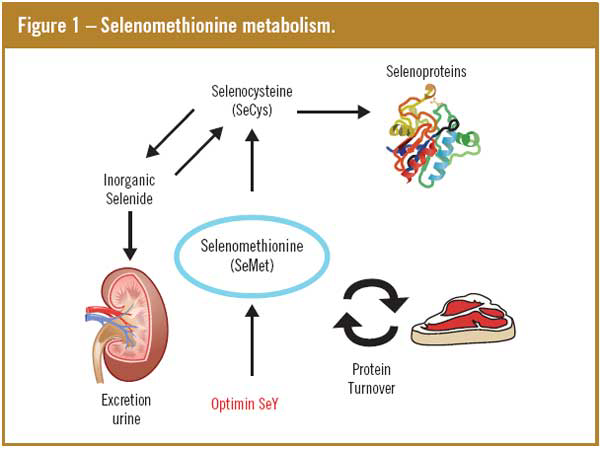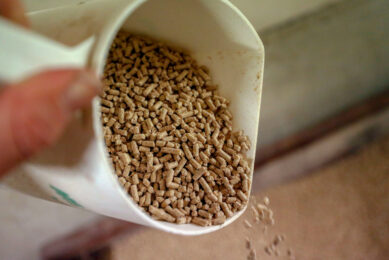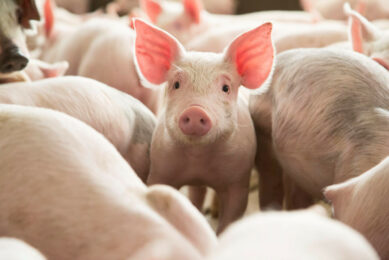Why check selenomethionine levels in selenium yeast?

QA departments of Trouw Nutrition International and Selko Feed Additives performed a laboratory analysis of selenised yeast product samples sourced in the EU and USA. Results show large differences between product samples on selenomethionine (SeMet) levels, the most effective and active compound in selenised yeast.
Selenium is one of the most examined and fascinating trace elements in life. Nowadays, selenium can be included in animal feed in two forms; as inorganic selenite or as organic selenium yeast. Both forms have different metabolic routes and effects. Selenium yeast is regarded as a more effective way of supplementing selenium. As more producers of selenised yeast enter the market, benchmarking on quality becomes increasingly relevant. Selenised yeast predominantly consists of selenomethionine (SeMet), which can be converted into selenocysteine (SeCys) by natural turn-over from methionine into cysteine. SeMet is recognised by the animal as normal methionine and absorbed and metabolised following the methionine pathway. When selenised yeast is fed, tissues will be enriched with the selenium from SeMet. If selenium is required, it is rapidly available from SeMet turning into SeCys (Figure 1). This saves valuable time and ensures a fast and effective reaction in case of stress or a disease.
Benchmark
To evaluate the nutritional value of different selenised yeast products, a sample benchmark analysis was performed at the University of Pau, CNRS (France). This research lab is known as professional and repeatable for organic selenium species determination. Total selenium, SeMet, SeCys and inorganic selenium values were determined. Eleven samples from each different batch of five different producers were sourced from the market. Samples were randomly numbered and sent to the lab for analysis by HPLC ICP-MS. Results are shown in Table 1.
Most interesting are differences in levels of SeMet. As displayed in the table, some samples contain half the level of SeMet of other samples (range from 24.8% to 69.7%). SeCys levels are, as expected, marginally present at all equal levels. Surprisingly, Sample 6 contained a relative large amount of inorganic selenium (13.3%).
Need of selenomethionine
Yeast can be enriched with selenium through growing it in a medium with a shortage of sulphur and a controlled amount of selenium. This forces the yeast, in order to grow and reproduce, to produce methionine with selenium incorporated. The more methionine is produced as SeMet, the more effective the yeast will be as an organic selenium source for the animal. Looking at all data from literature and published trials, it is generally accepted that SeMet is the most effective and active compound in selenised yeast. The level of SeMet of total Se in yeast is a proper parameter for the effectiveness and bioavailability of the selenium in the yeast.
The determination of main organic selenium types (SeCys and SeMet in selenised yeast) in combination with the total selenium level gives a clear estimate of the quality of the selenium enrichment process. Most selenised yeast products contain 97-99% organic selenium of total selenium. The dominant organic selenium is SeMet, which can be accurately (< 5% variation) determined. SeCys is present at fixed, low levels (2-5%) and of minor importance. The remainders are SeMet precursors and SeCys/SeMet intermediate amino-acids. These are individually present at very low levels in yeast and most of these compounds are less or not valuable to the animal.
Guaranteed high quality
Selko Feed Additives markets its own premium quality selenised yeast; Optimin SeY. Besides total selenium, every batch is also checked for selenomethionine content. This must be above 63% selenium of total selenium for the batch to be released for customers. This high guaranteed quality will ensure that animals will get the most out of the selenium yeast (Figure 2).
A selenised yeast product with a consistent and higher level of SeMet presents several advantages: first, in feed formulation lower inclusion levels may be needed to meet requirements to save costs without compromising animal performance. Second, when selenised yeast as part of animal feed is used for selenium enrichment of human foods like meat, eggs or milk, consistent and high selenomethionine content are essential to make health claims on these foods.
Conclusion
Among all Se yeast products sourced on the market there are large differences in quality and consequently nutritional value of different products. It makes sense to compare producers on SeMet levels and subsequent pricing. Choosing a product which guarantees selenomethionine is the best choice. It gives maximal benefits to animals, enriches animal products and lowers the cost of feed formula.











